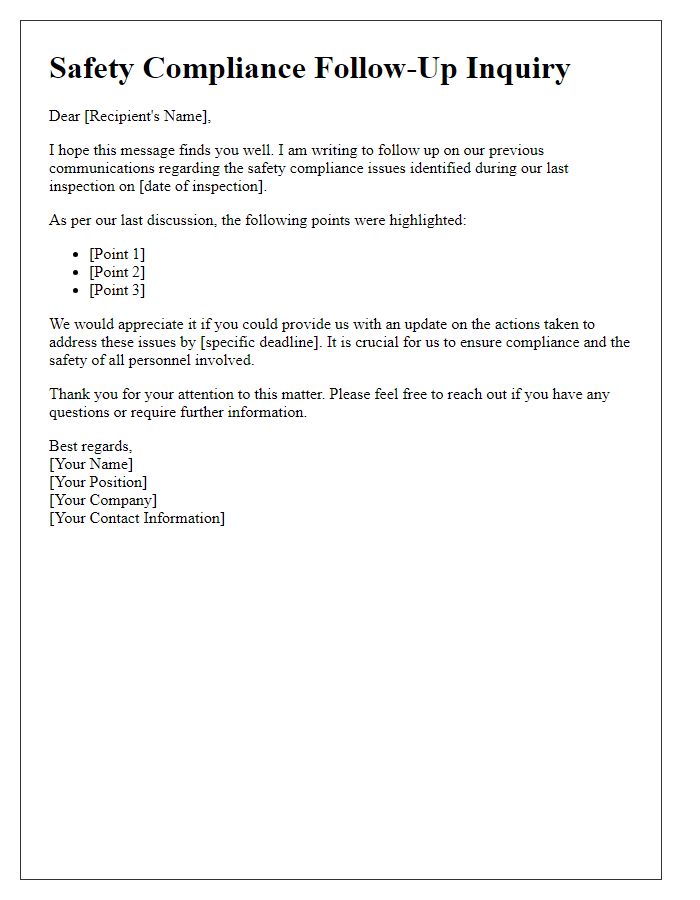Are you in the process of ensuring safety compliance within your organization? It's crucial to address any inquiries about safety standards and regulations promptly and effectively. Crafting a well-structured letter can set the stage for clear communication and foster a culture of compliance. Join us as we dive deeper into the essentials of creating a safety compliance inquiry letter that not only conveys your message but also builds trust in your commitment to safety.

Clear subject line
Subject: Inquiry Regarding Safety Compliance Regulations and Standards Note: The subject line should clearly identify the purpose of the inquiry, ensuring it captures the recipient's attention while indicating the focus on safety compliance relevant to specific regulations or industry standards.
Contact information
For inquiries regarding safety compliance, it is essential to provide complete contact information, including full name, title, and organization to facilitate communication. Include a phone number for direct voice contact, preferably a mobile number, which allows for immediate responses. An email address should be listed for written correspondence, with attention to details such as domain accuracy. Additionally, a mailing address may be necessary for formal documentation or notification processes, specifying the city, state, and zip code to ensure proper delivery. Clear and accessible contact information streamlines the inquiry process and enhances compliance dialogue.
Specific compliance requirements
Safety compliance inquiries often focus on specific regulations and standards relevant to various industries. For example, OSHA (Occupational Safety and Health Administration) outlines requirements for workplace safety in the United States. In addition, ISO (International Organization for Standardization) provides globally recognized standards to ensure quality and safety in manufacturing. Specific compliance requirements may include proper labeling of hazardous materials, employee training protocols, and regular safety audits. Detailed documentation must often be provided to demonstrate adherence to these regulations, which can vary by sector, such as construction, healthcare, or food production. Organizations must ensure that they remain up-to-date with federal, state, and local regulations to avoid potential penalties and enhance workplace safety.
Request for documentation or evidence
A safety compliance inquiry often involves the assessment of adherence to established safety regulations. For instance, local workplace safety standards established by organizations such as the Occupational Safety and Health Administration (OSHA) require documentation demonstrating the implementation of safety practices. The request for evidence must specify the types of documents needed, such as safety training records, incident reports, or safety inspection logs. These documents should include dates, responsible personnel, and compliance ratings to ensure thorough evaluation of safety standards. Compliance documentation is essential for industries like construction, manufacturing, and healthcare, where the stakes for safety are exceptionally high.
Deadline for response
The safety compliance inquiry deadline requires meticulous attention to regulatory standards and specific protocols. Organizations must ensure adherence to safety guidelines, often outlined by agencies such as the Occupational Safety and Health Administration (OSHA) in the United States. Strict timelines, typically ranging from 30 to 60 days, underscore the urgency for responses. Non-compliance can result in significant penalties, including fines or legal repercussions, emphasizing the importance of timely communication. Each inquiry response must address pertinent safety measures, employee training protocols, and incident reporting procedures to ensure comprehensive compliance with local, state, and federal regulations.













Comments